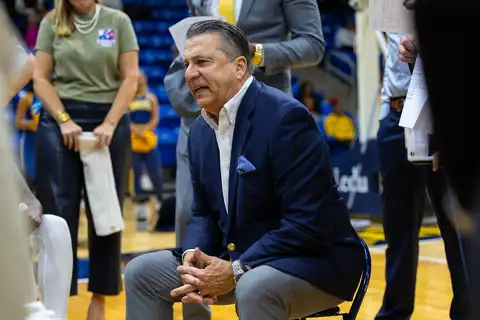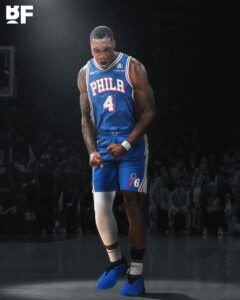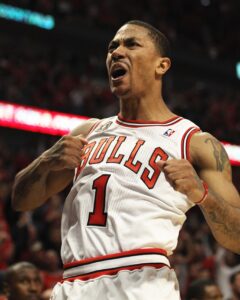
Today in Sports: Kobe Bryant’s NBA Debut and the Age Debate in Professional Basketball
Introduction
On November 3, 1996, Kobe Bryant, a young man fresh out of high school, made history by becoming the youngest player to ever set foot on an NBA court. At just 18 years and 72 days old, the then-Los Angeles Lakers rookie stepped into the professional spotlight with a fierce ambition and confidence that would eventually solidify him as a global icon. But Bryant’s debut wasn’t just a victory for the Lakers or the league. It was also the spark that ignited a longstanding, heated debate: Should players be allowed to jump straight into the NBA from high school?
The “straight to pro” path has since been both praised and criticized, and Bryant’s early entrance into the NBA remains a polarizing milestone. Supporters argue that exceptional talent should not be restricted, while critics claim that athletes as young as 18 aren’t physically or mentally prepared for the pressures of the NBA. Let’s dive into the complexities of Bryant’s debut and why it remains controversial even today.
Bryant’s Debut: Raw Talent or Reckless Move?
Bryant’s debut was as thrilling as it was risky. Back in the 1990s, few high school players dared make the leap to the NBA; most honed their skills in college basketball, where they could grow physically and emotionally before facing the pros. But Bryant, with undeniable talent and towering self-confidence, broke this mold. At 6-foot-6 and only 200 pounds, his physicality was far from the NBA standard. Yet, his work ethic and fearlessness hinted at something extraordinary.
Supporters argue that Bryant’s decision was a masterstroke. His debut set the stage for a career filled with 18 All-Star selections, five NBA championships, and two Olympic gold medals. For them, Bryant’s debut was a moment of visionary defiance—a sign that talent should take precedence over age, and that the NBA is for the best, regardless of background or experience.
Yet, the reality isn’t as simple. Critics point out that Bryant’s debut, as historic as it was, also reinforced the idea that NBA dreams could—and should—be pursued without any collegiate or further development. They argue that this mindset endangers not only the players but also the game itself. The physical demands of the NBA are grueling, and young players, who often lack the strength and resilience of older athletes, are particularly susceptible to injuries. Not everyone can weather the mental strain, either, as fame, pressure, and, in many cases, financial challenges confront them the moment they sign their first contract.
The “One-and-Done” Rule: The NBA’s Answer to the Age Controversy
In 2005, nearly a decade after Bryant’s debut, the NBA introduced the controversial “one-and-done” rule. This policy requires players to be at least 19 years old and one year removed from high school before they can enter the draft, effectively directing elite high school talents to spend at least one year in college or play internationally. Though largely seen as a safeguard, the rule hasn’t resolved the age controversy. If anything, it has created more frustration.
For one, the one-and-done rule prevents potentially ready young players from starting their careers while they’re at their peak athleticism. Critics argue that it’s an arbitrary barrier to success, one that limits the league’s talent pool and forces young men to waste a year in an environment they may not need or want. If players like Bryant, LeBron James, and Kevin Garnett could make successful leaps from high school to the NBA, why should anyone else be limited by age?
On the other hand, advocates for the rule insist that it’s essential for player protection. Requiring players to go to college, even for a year, gives them time to mature physically, mentally, and emotionally. It also provides a fallback if their professional career doesn’t work out. For every success story like Kobe Bryant, there are countless young athletes who never adapt to the NBA level, falling out of the league within a few seasons. College provides an opportunity to gain an education, develop as a person, and build a skill set beyond basketball.
Young, Gifted, and Under Pressure: The Reality of NBA Stardom at 18
While Bryant’s success story is legendary, the burden of NBA stardom at 18 is something most players cannot bear. Many athletes are thrust into a lifestyle filled with wealth, media scrutiny, and personal responsibility that many young people are simply unprepared for. Some experience burnout, while others fall into destructive patterns. Stories of young athletes struggling with mental health, addiction, or financial ruin are sadly common. A player like Bryant, with an unparalleled drive and strong support system, was an exception, not the rule.
There’s also the matter of the broader impact on high school athletes. Kobe Bryant’s successful leap inspired countless other young players to dream big, often foregoing college aspirations in favor of NBA stardom. But this “Kobe effect” has had mixed results. For every young player who followed in Bryant’s footsteps and succeeded, there are many others who took the plunge and didn’t make the cut, ultimately hurting their futures in the process.
Re-Evaluating Age and Readiness in Professional Sports
As we reflect on Kobe Bryant’s groundbreaking debut nearly three decades later, it’s clear that age and maturity remain contentious issues in professional sports. Kobe’s story demonstrates that exceptional talent shouldn’t be limited, but it also raises questions about the league’s responsibility to its players and the sacrifices young athletes make for a shot at greatness.
Maybe the NBA should take a more nuanced approach—one that evaluates players based on individual readiness rather than an arbitrary age limit. Some propose a developmental league or tiered entry system that allows young athletes to grow under less pressure before joining the big league. With college athletes now able to profit from their name, image, and likeness (NIL), staying in college is more attractive than ever and may offer a healthier balance between personal growth and athletic ambition.
Conclusion
Kobe Bryant’s historic NBA debut is undeniably a milestone, but it remains a flashpoint in the debate over age, readiness, and player welfare. As the league continues to evolve, perhaps it’s time to consider a more flexible approach—one that honors individual talent while ensuring young athletes have the tools they need to succeed, both on and off the court.
Bryant proved that age is just a number when it comes to greatness, but his legacy also reminds us of the high stakes involved in early entry to the professional world. As future generations of athletes emerge, the league, fans, and players themselves will need to balance ambition with responsibility, and find a way to honor both the game and the people who play it.






